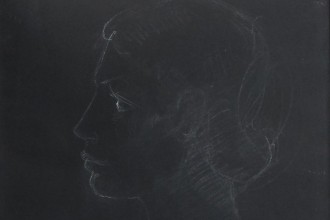By Christine Jin
Love stories abound in film, and have been told in various forms and styles, but very rarely do these stories feature front-and-centre an erotic homosexual relationship, let alone one between two females. A shifting socio-political landscape for LGBT equality over the past few decades has turned the entertainment industry’s attention to the needs of those previously deemed undeserving. Their stories began to form a distinctive sub-genre, and their fictional surrogates figured more heavily in mainstream movies, albeit in limited roles. The representation of gay characters continues to incrementally improve, and so has the visibility of same-sex pairings as a viable alternative in romance narratives. Although there is a long way to go, homosexuality is gradually becoming a taken-for-granted part of our moviegoing experience, and today’s knowledgeable audiences demand more quality productions about this specific subject-matter. Additionally, as gay experience is more thoroughly integrated into everyday cinema, the distinctions between traditional and gay romance is blurring, with the latter resisting habitual genre pigeonholing and finally being treated as normal.
That’s where Blue is the Warmest Color comes into the picture. Written and directed by the Tunisian-French filmmaker Abdellatif Kechiche and starring French actresses Adèle Exarchopoulos and Léa Seydoux, the unanimously-anointed Palme d’Or at last year’s Cannes Film Festival premiered to critical acclaim, but also stirred up controversies about which everyone interested in this movie has heard by now. While rebuffing the accusations of approaching his subject matter with a male gaze and a patriarchal view on female sexuality (“Do I need to be a woman to talk about love between women?â€), Kechiche stressed that his intention was to portray a love that is at once absolute and cosmic. Meanwhile in her interview with The Daily Beast Seydoux made a point of emphasizing that what’s dealt with in the movie is more than homosexuality. The director and the actress, apparently no longer on speaking terms after accusations of what amounts to bullying on set, unified to bring the universality of love to the forefront of the discussion.
Love is indeed everything and everywhere in the life of Adèle (Exarchopoulos), a sexually confused teenager who shares a turbulent affair with an older artist named Emma (Seydoux). If this synopsis smacks of utter banality, an actual unfolding of these chapters of her life is quite engaging and teems with intense emotion, sensuality, and of course, body parts — especially faces. Unabashedly displaying his obsession with his newly discovered muse, Kechiche keeps the camera in such close proximity to her visage that one can almost imagine him having separation anxiety whenever she slips out of frame. Hers is not the only face that dominates the screen — an overreliance on close-ups is essentially the director’s default mode; he shoves the camera into the faces of all those who interact with or surround Adèle. Such ultra-tight framing is not merely intended to reinforce the character’s subjectivity; it also seems Kechiche is establishing a visual language that actively discourages looking beyond the surface of the characters’ actions and feelings.
Apart from his monotonous shooting style, Kechiche insists on crude literalness in splicing scenes and visual elements together. Early on, Adèle’s teacher and classmates discuss the French realist novel ‘La vie de Marianne’ in her high-school literature class. The words or phrases they read aloud here include, “I am a woman. And I tell my story,†“her heart was missing something,†“exchange glances,†and “love at first sight.†Kechiche won’t just get the story started; he goes out of his way to announce what happens in the scenes that follow. So as expected, once Adèle has a few experiments under her belt, she meets and falls in love with Emma. They eat and have sex. Throughout, Kechiche draws symbolic parallels between Adèle’s voracious appetite for food and for sex. But his presentation is so deliberately transparent that the audience cannot possibly miss what her oyster-shucking during a meal with Emma’s family signifies, and those two family dinners — one at Emma’s liberal home and the other at Adèle’s practical-minded one — are half-baked commentary on the couple’s class differences.
Then there are those notorious sex scenes. The most sensuous and tactile moments in the film, they have been criticised for their idealised representation of lesbian coupling. The critics’ suspicions have sort of been confirmed by Kechiche himself: he intended to shoot those scenes like paintings or sculptures. In fact, the pair’s post-coital position recalls, say, Gustave Courbet’s Le Sommeil, and their lovemaking looks extra-beautiful under carefully designed lighting. But even outside the bed, shots of the lovers’ courtship are by turns naturalistic and highly romanticised — yes, with lots of close-ups and the camera’s lingering gaze on their faces.
There’s no denying that representations of women’s sexuality have been, and remain, an important issue. But to uncritically invoke the male-gaze concept, a product of second-wave psychoanalytic feminism, is to base the criticism on heteronormative assumptions; to say that these sex scenes were only orchestrated to arouse the male spectator is to speak for the female viewer who might find the couple’s sex just as exciting. Indeed, reactions in lesbian communities have been wildly mixed, as some individuals’ subjective romantic experiences are inevitably more aligned with the film’s depiction than others. Keeping women making love in medium shot, for instance, helps achieve an admirable sense of balance and neutrality, but it’s not necessarily the best way of communicating the bliss of two people desiring and consuming each other. In spite of the film’s slightly clunky transitions or awkward class-commentary, Kechiche is consistent about his literal, primitive approach; close-ups mean intimacy and an exchange of looks means desiring. Whatever the director’s flaws, co-leads Exarchopoulos and Seydoux succeed in channelling the kind of love he wanted to depict: absolute and cosmic.
Christine Jin is a contributing editor for the magazine.





